Episodes

Thursday May 18, 2023
Thursday May 18, 2023
The Five Dysfunctions Of A Team
The Five Dysfunctions Of A Team Full Book Introduction
You might find it strange that, sometimes, companies armed with better and newer technology, stronger directors, and more capital than their competitors still fall behind in terms of revenue and customer growth. How can this be? The Five Dysfunctions of a Team: A Leadership Fable uses the story of a CEO rescuing a company to show us the dysfunctions that can hinder teamwork and performance and how overcoming them can set a company off to a brand-new start.
Author : Patrick Lencioni
Patrick Lencioni is the president of the management consultancy The Table Group as well as a bestselling business writer and speaker devoted to the study of corporate and team management. He has consulted thousands of senior executives from Fortune 500 companies, high tech start-ups, universities and non-profit organizations. He has been named one of America's top five business speakers by The Wall Street Journal, as well as one of the “ten new gurus you should know” by Fortune Magazine.
Overview | Chapter 1
Hi, welcome to Bookey. Today we will unlock the book The Five Dysfunctions of a Team: A Leadership Fable.
In today’s competitive market, we often see companies equipped with cutting-edge technology, more capital and better talent still falling behind their competitors in terms of revenue and customer growth. Likewise, the imaginary, Silicon Valley-based software company presented in this book, DecisionTech Inc., boasts an accomplished, prestigious executive team and an impeccable business plan. Yet two years after its founding, the company is on the verge of bankruptcy. What has led to its failure? Can the company be revived and how? These and more questions are answered in this management tale.
True to the literary tradition of the fable, the author uses the tribulations of fledgling CEO Kathryn Petersen, tasked with saving the company before it’s too late, to explain the five dysfunctions that can make even the best teams ineffective, and how to overcome them. As such, the book can be of help to any company who find themselves reflected in the narrative. It shows that the process of building an outstanding team that can really make good use of the company resources, while not easy, is not too complicated either. All it takes is to direct everyone’s energies towards the common goal, a result that can prove useful across any industry and market condition.
Author Patrick Lencioni is a founder of the consultancy The Table Group. Since 1997, The Table Group has dedicated themselves to helping company leaders improve organizational performance and interdepartmental communication. A prolific speaker, Lencioni himself shares his thoughts on organizational management and leadership with over ten thousand people every year, and his deep insights into the difficulties of teamwork have led him to elaborate original solutions to common team dysfunctions.
And now, let’s begin to learn about the following five dysfunctions of teams and their solutions:
Part One: The first dysfunction: without trust, there can be no teamwork;
Part Two: The second dysfunction: fear of conflict lowers efficiency in problem solving;
Part Three: The third dysfunction: lack of commitment, where team decisions are impossible to define;
Part Four: The fourth dysfunction: avoidance of accountability, and a lack of pressure among coworkers;
Part Five: The fifth dysfunction: inattention to results, when team performance is not prioritized.
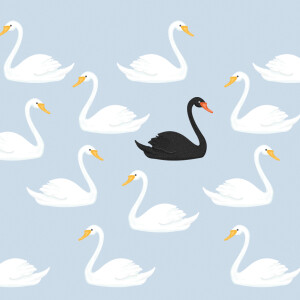
Thursday May 18, 2023
Thursday May 18, 2023
The Black Swan
The Black Swan Full Book Introduction
Before the discovery of the first black swan, people were convinced that all swans were white. Hence, a “Black Swan” indicates an unexpected and impactful rare event. From the financial crises to the sinking of the Titanic, or the September eleven attacks, “Black Swans” exist in all fields. This book provides an in-depth analysis of the nature and the rules of “Black Swans.” It enables us to understand both how society operates, and how to gain the upper hand in this uncertain world.
Author : Nassim Nicholas Taleb
Nassim Nicholas Taleb is a researcher at the New York University Courant Institute of Mathematical Sciences. He is the author of several bestselling books, such as ‘Fooled by Randomness’, ‘An-tifragile’, and ‘Skin in the Game’. As a practical researcher of “uncertainty,” Taleb has written fifty academic papers investigating “uncertainty” and is known as a thinker with “rare courage and broad knowledge.” His thoughts and works have influenced a large population of readers worldwide. He has also helped in making the “Black Swan” become a household concept.
Overview | Chapter 1
Hi, welcome to Bookey. Today we will unlock the book ‘The Black Swan: The Impact of the Highly Improbable’.
If someone said that tomorrow is always full of unknowns and risks, you may think that they are being a bit alarmist. However, this was true of September the tenth, two thousand and one. Who could have ever predicted that terrorist attacks would happen the very next day? These events stunned the entire world. That morning, terrorists hijacked four passenger airliners. One of the planes crashed on the ground. Two planes crashed into the World Trade Center in New York. The sky was filled with clouds of smoke, and both towers collapsed within two hours. The fourth plane crashed into the Pentagon in Washington and partially damaged the building. Nobody on those four planes survived. About three thousand people were killed, six hundred more than the victims of the attack on Pearl Harbor. It can be said that the September eleventh attacks destroyed the entire World Trade Center and part of the Pentagon. But more importantly, it damaged America’s sense of peace and security. What was shocking about the attacks were not only its sudden and disastrous consequences, but also why the Unites States of America, which has the world’s most advanced means of communication and intelligence, failed to predict this long-planned plot.
Now, you may have an idea about what the term “Black Swan” refers to. It indicates an unexpected and impactful event. It’s beyond expectations and brings about immense influence. The September eleven attacks are a typical “Black Swan.” However, if you think that “Black Swans” are limited to national affairs, you are wrong. In fact, “Black Swans” are everywhere. They have an impact on issues ranging from national and social security, to our daily lives. Hence, let’s see what the book ‘The Black Swan’ has to say about why it’s hard to predict a “Black Swan” and how we should cope with the unpredictable future.
The author of this book, Nassim Nicholas Taleb, is a researcher at the New York University Courant Institute of Mathematical Sciences. He also wrote several bestselling books, such as ‘Fooled by Randomness’, ‘Antifragile’, and ‘Skin in the Game’. In his early years, he was a businessman and dealt with various financial products in New York and London. Now, he serves as a Distinguished Professor at New York University. ‘The Black Swan’ is the epitome of Taleb’s thoughts concerning “uncertainty”, and a book full of prophetic wisdom. Taleb is also known as the “father of the Black Swan” for putting forward the “Black Swan Theory.” Besides enjoying the status of a classic in the socio-cultural field, the book was listed as a bestseller by the New York Times for more than a year and has been published in over thirty languages.
Next, we will deconstruct the core contents of ‘The Black Swan’ in three parts to understand how we can cope with the unpredictable future.
Part One: What are the characteristics of the “Black Swan”?
Part Two: Why can’t we predict the “Black Swan?”
Part Three: How can we cope with the impact of the “Black Swan?”
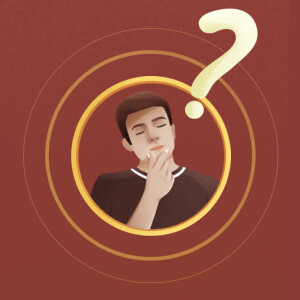
Thursday May 18, 2023
Thursday May 18, 2023
Start With Why
Start With Why Full Book Introduction
Why was Steve Jobs able to make Apple a worldwide craze? Start With Why reveals that the secret lay in Jobs using The Golden Circle, always asking WHY before anything else. This book introduces the concept of The Golden Circle, and through ample examples, explains why The Golden Circle is so effective, the process of using it, and how to increase your ability to exert influence through The Golden Circle.
Author : Simon Sinek
Simon Sinek is a British-American author and inspirational speaker, as well as a prominent voice in leadership theory. He became famous due to his discovery of The Golden Circle. He has served as an advisor for numerous leaders and organizations, from SMEs and startups to large enterprises such as Microsoft, to non-profit organizations, and has even advised governments and politicians. His views are frequently quoted in major newspapers and magazines. His other works include Leaders Eat Last among others.
Overview | Chapter 1
Hi, welcome to Bookey. Today we will unlock the book Start With Why: The Golden Circle that Jobs followed to make Apple a global success.
Everyone knows Apple. In 1976, Steve Jobs and Steve Wozniak founded Apple Computer in California. In its first year of business, selling only one product, Apple made a million dollars in revenue. By year two, their sales had soared to 10 million dollars. And by the sixth year, Apple had become a billion-dollar company with over 3000 employees. In April 2012, Apple became the world’s biggest company, with a market value of over 520 billion.
Why was Apple able to achieve such enormous success? You could say it’s because Apple’s products are perfect, their advertisements are full of innovation, and consumers everywhere love them. However, the author of Start With Why, Simon Sinek, thinks that the reason Apple was able to succeed was in fact because its founder used a brand new perspective to look at personal computers, and dared to challenge traditional market views. He did this by first asking WHY. While the majority of companies were still thinking that the biggest market for computers lay in business use, Apple envisioned that it would become a commodity for everyone and not simply a tool that sits on an office desk. It's exactly because Apple insisted on asking WHY before anything else, that they were able to achieve non-stop innovation and push aside these traditional views, and it was this very concept that won Apple widespread long-term trust and support from consumers.
The book we'll unlock for you today, Start With Why, provides a deep analysis of the secret to Apple becoming a global success – The Golden Circle, or in other words, asking WHY before anything else.
Now, let’s learn to understand this principle by looking at three separate areas:
Part One: Why The Golden Circle is so effective
Part Two: How to use The Golden Circle
Part Three: Using The Golden Circle to win support

Thursday May 18, 2023
Thursday May 18, 2023
Leaders Eat Last
Leaders Eat Last Full Book Introduction
Some enterprises perform well in the short-term but, in the long-term, end up failing. While this unfortunate scenario happens to some branches around the world, other can miraculously grow their stock prices in over 1200% increase in stock prices. Why does that happen? What is the difference between those that succeed and those who fail? Many enterprises regard short-term rises in earnings as a sign of success, but overlook long-term growth and sustainability. So, how can we inspire employees with ideals of dedication and cooperation whilst keeping up with an extraordinary performance? This book, used as training material by top organizations including Microsoft, American Express, the US Department of Defense, and the United Nations, will open the door to a sustained increase in performance in your teams.
Author : Simon Sinek
Simon Sinek is known as the pathfinder of leadership philosophy. His pioneering "selfish & selfless chemicals" leadership rule initiated the integration of human biology principles into leadership philosophy. Sinek also put forward other important leadership principles to leaders all around the world, including the “Golden Circle" and the "Circle of Safety". His leadership speech streamed on TED has over 54.77 million views, and ranks among the top videos of the platform.
Overview | Chapter 1
Hi, welcome to Bookey. Today we will unlock the book “Leaders eat last: Why some teams pull together and others don’t”.
If you were to visit the United States Marine Corps, you will notice an interesting fact: the local restaurant has a different dynamic. Many organizations opt to serve their leaders or their top-tier employees before anyone else in the team. However, in the American Marine Corps, junior employees are served first, before the group of senior leaders, who are usually the last ones to get a meal. Surprisingly, there is no standing order which dictates this behavior, the habit is just a product of the strong leadership culture of the foundation.
Exceptional leaders genuinely care about their employees, as they understand that they are the ones who put the power in their hands. Good leaders put others before themselves, sacrifice personal interests, and advance the interests of the organization, gaining true respect from their peers and strengthening their leadership as a consequence.
The principle of "leaders eat last" is not only applicable to the Marines. If typical enterprises or organizations can blend this concept into their own corporate cultures, they will also be capable of building and sustaining a well-motivated team. However, in reality, we will see that the "kick the cat" effect often exists in many companies. The term “kick the cat” refers to a chain reaction where those who rank higher in a company vent dissatisfaction to people – or employees - considered inferior. When the upper-level group of employees of an enterprise is under extreme pressure in an enterprise, they tend to pass the pressure to the middle level workers. Following the cycle, the pressure will then end in the group of employees with the lowest level of knowledge. When this group is under duress, working becomes a burden for them. The entire working environment becomes a "pressure barrel", where the employees at the bottom of the “barrel” feel exhausted and suffocated. The results are clear-cut: loss of employees and following company crises.
How can an enterprise on the verge of bankruptcy revitalize its fortune? How can leaders inspire employees' passion for work? How can we functionally improve a company's efficiency? The book "Leaders Eat Last" offers fascinating insights about the creation of a winning company culture and helps people to become outstanding leaders.
As the best training material for team management, this book integrates base human survival principles into leadership philosophy. The "selfish & selfless chemicals" leadership rule tells readers how to establish a "Circle of Safety" that leads the way to a sense of security. This “circle” is powerful enough to inspire employees with ideals of dedication, cooperation, promoting stronger and more effective team performance. The author, Simon Sinek, believes that positive long-term outcomes can only be achieved when members of an organization share common values and are sincerely respected in their work environment. Even in the face of adversity, a team in a “Circle of Safety” will eventually overcome obstacles, increasing the business’ chances of survival.
Next, we will take a look at the upcoming three parts:
Part One: How to improve team cohesion and create a "Circle of Safety"
Part Two: How to relieve employees' stresses and maintain the "circle of safety"
Part Three: How to safeguard the "Circle of Safety" in the face of challenges and temptations
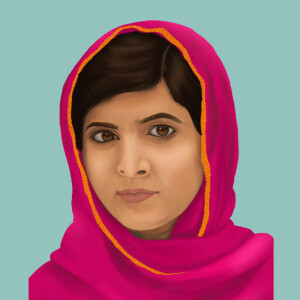
Thursday May 18, 2023
Thursday May 18, 2023
I Am Malala
I Am Malala Full Book Introduction
When Malala Yousafzai was born in Pakistan, she was a normal girl, but she went on to resist terrorists and advocate for women’s right to education. As a result, she was shot in the head by armed militants at the age of 15, but she miraculously survived. Her story moved the world, and she won the 2014 Nobel Peace Prize at only 17 years old. How did she have the superhuman courage to face death, and how did she maintain such strong convictions in her fight for equality? Let’s experience this brave and visionary tale together.
Author : Malala Yousafzai, Christina Lamb
Malala Yousafzai, born in 1997 in Pakistan, became well-known when she published an article on the BBC website at age 11 that argued for children’s and women’s rights to education. When she won the 2014 Nobel Peace Prize, she was only 17 years old, making her the youngest person to ever win the prize. Christina Lamb is a well-known British war journalist who started covering Pakistan and Afghanistan in 1987. She has been named Britain’s Foreign Correspondent of the Year five times, and she has received Europe’s highest honor for war correspondents, the Prix Bayeux-Calvados.
Overview | Chapter 1
Hi, welcome to Bookey. Today we will unlock the book, I Am Malala: The Story of the Girl Who Stood Up for Education and Was Shot by the Taliban.
In the beginning of the 21st century, most people living in peaceful countries enjoyed comfortable lives, and they saw the right to education as a given. They could hardly imagine that, under the same sky, many corners of this world were full of war. The dark places were overrun with fear. Citizens of those countries were being tossed between endless oppression and torment, and countless children were yearning for education and equal treatment, but they struggled in vain. They may have been impacted by poverty, illness, or war, but all of them wanted the world to hear their voices, and the author of this book, Malala Yousafzai, was one of them.
Malala was born to a normal family in the Swat Valley of Pakistan. When frequent terrorist activity broke out in Pakistan, and an anti-government organization, the Taliban, controlled their small village in the Swat Valley, she refused to be silent. Instead, she stood up to her oppressors and fought for the right to an education. She was regarded as the terrorist organization’s enemy, a label that put her life in jeopardy. She was shot by a terrorist at the age of 15. After miraculously surviving, she became the youngest person to ever win the Nobel Peace Prize at the age of 17.
I Am Malala, the autobiographical account of these experiences, was on the New York Times best-seller list for over a year. In the book, she reveals a terrorist organization’s evil deeds and darkest facets, giving an account of her extraordinary struggle to secure women’s right to education. Time magazine commented, “In trying to silence this Pakistani schoolgirl, the Taliban amplified her voice. She is now a symbol of the struggle for women’s rights all over the world.”
Malala mentions in her book that there are 57 million children in the world who have not been able to attend elementary school, and Pakistan is one of the countries where this problem is most serious. In 2014, the World Bank released a report that showed there were 7 million people in Pakistan who were deprived of education, and two thirds of those people were women. Most of the people who have lost out on schooling don’t have basic arithmetic, reading, or other language skills.
A UNESCO survey found that the main barriers that stand between children and education are gender, geography, poverty, and armed conflicts, those conflicts being one of the top reasons that students are unable to attend school. Among elementary-age children that are unable to attend school, over one third of them live in areas impacted by war or similar conflicts.
Maybe we have no way to imagine how people live in Pakistan, especially in the areas and times most heavily impacted by conflict and terrorism. When their lives are hanging in the balance, do they still have dreams? When facing hardships, do they choose to be resigned to their fate, or do they stand up and fight? Do the children learn from their life experiences instead of learning from teachers? All of these questions will be answered after we have finished listening to this bookey.
In this bookey, we will see what we can truly gain from Malala Yousafzai in three parts:
Part One: A cry for freedom in the face of Taliban terrorists;
Part Two: A struggle for education under the oppression of the Taliban;
Part Three: A call for world peace after being attacked by the Taliban.
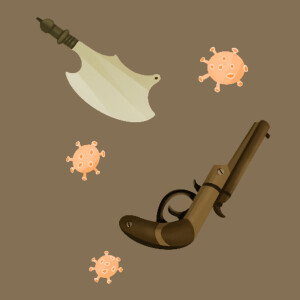
Thursday May 18, 2023
Thursday May 18, 2023
Guns, Germs, And Steel
Guns, Germs, And Steel Full Book Introduction
Why did the inhabitants of the Eurasian continent conquer the American natives, instead of the other way around? Why are wheat, maize, and livestock like pigs and cows found in certain regions of the world and not in others? This book reveals the facts behind the broader environmental elements that have helped shaped the world’s history, thereby effectively refuting anthropological theories based on racism. It also records the underlying causes of the current situation and the many injustices visible in our modern world. This book can be considered as a true history of all the races and ethnicities of the world.
Author : Jared Diamond
Jared Diamond is a polymath spanning a wide range of fields including anthropology, ecology, physiology, and evolutionary biology. He is a current professor of geography and former professor of physiology at University of California, Los Angeles (UCLA). He is also a member of the American Academy of Arts and Sciences and the National Academy of Sciences, as well as an editorial board member of Skeptic magazine. Dr. Diamond has received a MacArthur Foundation Genius Award, in addition to research prizes and grants from the National Geographic Society. He is well-known for his popular science books such as The Third Chimpanzee; Guns, Germs, and Steel; Collapse; and Why Is Sex Fun?
Overview | Chapter 1
Hi, welcome to Bookey. Today we will unlock the book Guns, Germs, and Steel: The Fates of Human Societies.
In 1972, the author, Jared Diamond, was walking along the beach in New Guinea when a local friend Yali asked him, “Why is it that you white people developed so much cargo and brought it to New Guinea, but we black people had little cargo of our own?”
To his surprise, Dr. Diamond found it difficult to answer this seemingly simple question. Why is that so?
Yali’s question may seem like a simple question about the difference in the production of goods, but his question actually contains many hidden caveats. Why, for example, did the people of New Guinea still seem to be “living in the Stone Age” two centuries ago, while the Europeans already had a wide variety of inventions such as steel axes, gunpowder, garments, soft drinks, and umbrellas? Taking a closer look at the difference in lifestyles of these two groups of people, we may connect it to the broader spectrum of disparities in the modern world and ask: why is it that people of Eurasian origin (including those who have settled in North America) control most of the world’s wealth and power today? Moreover, some ethnic groups, like the indigenous peoples of Australia, the Americas, and Sub-Saharan Africa, no longer hold their homeland but have been subjugated or even wiped out.
Around the start of the 16th century, European countries began to occupy territories all over the world. Why was it the Eurasians who conquered and subjugated native peoples, rather than the native Americans, Africans, and Australian aborigines, conquering or subjugating the Eurasians?
Some people claim that around that time, Eurasia already had many advanced empires with all kinds of technological and weapons advantages that people in other parts of the world did not. It was these technological and political differences that led to the inequalities that we see in the world today. While this is an obvious answer, the deeper question remains as to what caused these differences in the first place.
Historically, certain groups have claimed that Europeans are naturally more intelligent and genetically superior to other races. Of course, today we know that such an explanation is not only racist and offensive, but also factually incorrect.
So, what is the true cause of these differences? In the years since his conversation with his friend, Dr. Diamond has conducted significant research into human evolution, history, and language, and he published Guns, Germs, and Steel twenty-five years later as an attempt to answer Yali’s question.
Like The Third Chimpanzee, which we unlocked in a previous bookey, Guns, Germs, and Steel has also won the Royal Society’s Science Book Prize for Dr. Diamond. In addition, it was a New York Times bestseller and has won the Pulitzer Prize for general non-fiction. The book reveals some broad environmental factors that have benefitted the historical development of certain regions of the world, thereby debunking anthropological theories based on race and racial superiority. At the same time, it offers possible causes for many of the inequalities that we see in the world today. It can be regarded as a true history of the peoples of the world.
In this bookey, we will introduce the book in three parts:
Part 1: Guns, germs, and steel;
Part 2: Time, flora and fauna, and geographical barriers;
Part 3: China, Oceania, and Africa.
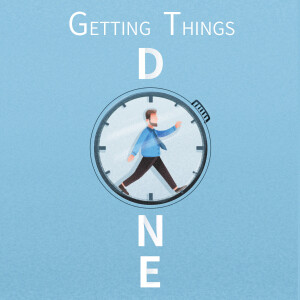
Thursday May 18, 2023
Thursday May 18, 2023
Getting Things Done
Getting Things Done Full Book Introduction
Do you often complain about not having enough time or having a lot of work to do? Getting Things Done: The Art of Stress-free Productivity will help you solve all your problems. This book introduces a method called GTD time management. It is an efficient workflow practice proven to help you "Win at the Game of Work and Business of Life." This book is based on the author’s over 30 years of consulting experience and personal exploration. It has been published in 33 countries, helping millions of readers around the world to get their work done easily and efficiently.
Author : David Allen
David Allen, an American author, is the founder of David Allen Company, a management consulting enterprise. He is one of the most influential thinkers in improving work efficiency and a leading authority in the field of time management. He created the GTD time management method and was recognized by Forbes as one of the foremost executive coaches in the U.S.
Overview | Chapter 1
Hi, welcome to Bookey. Today we will unlock the book Getting Things Done: The Art of Stress-free Productivity.
Are you confused when you are busy as a bee every day at work but can’t get the promotion or income you expect? Do you still have a lot of work to do when it is time to go home? Most of us are annoyed by tight schedules, a heavy workload and too much stress.
It seems that the reason these things happen is because we have too much work to do – but in fact, we have poor time management skills. No matter if you want to lose 40 pounds, take control of your financial destiny, disentangle your family relationships or pursue your dreams, you will need to manage your time to improve productivity. The method introduced in this book is GTD time management. It is a set of proven and highly efficient workflow practices which can free you from excessive work and enable you regain control of your life.
GTD is short for "Getting Things Done" and it simply means to get things done. This method has been popular worldwide for more than a decade. Many people even greet others by saying, "Are you GTD today?" You can see how great the impact is.
The book is written by David Allen, an American training expert with more than 30 years of experience in management and pioneering research on improving productivity. He has spent thousands of hours helping people in "work trouble" to manage their work. This book is a collection of the author's practical experiences over the years, and it will guide you to produce maximum output with minimum effort.
The nature of time management is to manage our minds and actions. GTD time management holds that the most important point is to move all distracting work arrangements out of your brain through some external tools and techniques. In this way your brain remains relaxed and happy. GTD time management methods can make you more successful, and more importantly, help you live a happy life.
In this Bookey, we will talk in detail about the four parts of the GTD time management method.
Part one: how to prepare for GTD time management?
Part two: the five stages of lateral mastering work flow.
Part three: the five phases of longitudinal project planning.
Part four: the three keys to yielding twice the result with half the effort.
These four parts will help you to set up your time management system. Now let's begin to talk about them, one by one.
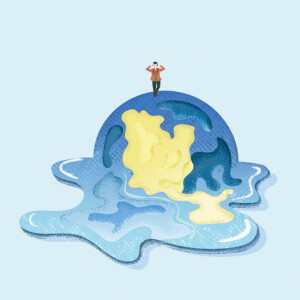
Thursday May 18, 2023
Thursday May 18, 2023
21 Lessons For The 21st Century
21 Lessons For The 21st Century Full Book Introduction
Artificial intelligence has already entered our lives. While we enjoy the convenience it brings us, we are also worried that it might take our jobs, access our data, and make decisions for us. Given the numerous challenges we will be facing in the future, how do we make sure we can stay at the forefront of time and survive? Following Sapiens: A Brief History of Humankind and Homo Deus: A Brief History of Tomorrow, as the finale of the trilogy, the book 21 Lessons for the 21st Century will bring you to a significant discussion about human destiny in the twenty-first century.
Author : Yuval Noah Harari
The author of this book is Yuval Noah Harari, an Israeli writer, also known as “the young geek“. Not only does the book take a historical perspective, but also covers a wide range of knowledge areas, such as biology, sociology, psychology, philosophy, and religion, fully demonstrating the author’s extensive knowledge. Unlike traditional historians, Harari, being creative, makes videos based on the content of his book and uploads them on YouTube, gaining a large number of young fans.
Overview | Chapter 1
Hi, welcome to Bookey. Today we will unlock the book: 21 Lessons for the 21st Century.
According to statistics from the Internet Data Center (IDC), the amount of data generated globally in the year 2008 was zero point four nine zettabytes (ZB). If we assume that a book has 200,000 words, that amounts to an equivalent of fourteen hundred trillion books, which can fill two hundred and eighty thousand libraries. By 2011, the amount of data had increased by two point seven times, which equals to an average increase of 250,000 libraries per year.
Fortunately, artificial intelligence (AI) can process a great amount of data, and allows us to enjoy the technological advancement it brings to our lives. However, when we benefit from technology, have we ever thought about the possibility of AI taking our jobs, accessing our data, and even making decisions for us? When it comes to this point, how will we survive?
The book, 21 Lessons for the 21st Century by Harari discusses this exact question. Not only does it take a historical perspective, but it also covers a wide range of knowledge areas: biology, sociology, psychology, philosophy, and religion. The author believes that individuals can have a direct influence on the world.
Known as the young geek, Yuval Noah Harari is a historian who obtained his doctoral degree from the University of Oxford. Besides this book, he has published another two global bestsellers, Sapiens: A Brief History of Humankind and Homo Deus: A Brief History of Tomorrow, completing his trilogy.
Unlike the other two books, the one we are going to discuss today is more instructive. It focuses more on the challenges people are facing at the present moment. It gained enormous popularity and wide attention around the world since it was published, and has so far been authorized for publication in over twenty countries.
This book has selected twenty-one significant topics on the solutions relevant to the future of humans. This Bookey will divide them into three main parts.
Part One talks about the challenges the information explosion era poses to human beings;
Part Two is about how individuals can find the truth;
Part Three looks at how individuals can prepare for the future.
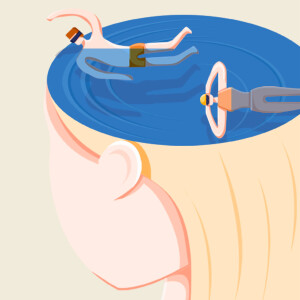
Thursday May 18, 2023
Thursday May 18, 2023
Thinking, Fast And Slow
Thinking, Fast And Slow Full Book Introduction
The human brain is equipped with two thinking systems, System 1 that is good at thinking fast, and System 2 that is good at thinking slow. System 1, the fast thinker, relies on intuition when it makes a judgment. While it is fast and efficient, it is inept at statistical reasoning and is susceptible to many systematic biases. On the other hand, System 2, the slow thinker that oversees rational thinking, is lazy and often takes System 1’s intuition for granted. More often than not, we are irrational when we make judgments and decisions, and we are definitely not what the author calls “Econs.”
Author : Daniel Kahneman
Daniel Kahneman is a psychologist and a pioneer in behavioral economics. He was awarded the 2002 Nobel Memorial Prize in Economic Sciences for bringing psychology and economics together to better understand how humans make decisions under uncertainty. His research has covered social psychology, cognitive science, and behavioral economics. Documenting his pioneering findings in these fields, the 2011 book Thinking, Fast and Slow is an ensemble of Kahneman’s finest works.
Overview | Chapter 1
Hi, welcome to Bookey. Today we will unlock the book Thinking, Fast and Slow, a milestone in the field of behavioral economics.
Daniel Kahneman, the renowned psychologist and author of the book, has combined psychology and economics to examine how humans make judgments and decisions under uncertainty. His trailblazing work won him the 2002 Nobel Memorial Prize in Economic Sciences. By collaborating with his colleague Amos Tversky, Kahneman paved the way for a new field of study, Behavioral Economics. Their research broke down the barriers between social psychology, cognitive science, and economics, providing us with a better understanding of the mechanisms of the human brain in judgment and decision making.
Psychologists Keith Stanovich and Richard West were the first to propose that the human brain runs two cognitive processes, fast thinking and slow thinking, which they named System 1 and System 2. These terms were adopted by Kahneman in this book.
System 1 and System 2 are not two physical parts in the human brain but a virtual concept that showcases how thinking works. System 1 is a subconscious, fast-thinking system that relies on intuition, whereas System 2 is a conscious, slow-thinking system that takes voluntary effort to control. System 1 is in charge of the day-to-day tasks that we are familiar with, such as braking or turning according to signals when we drive. On the other hand, System 2 takes over the tasks or problems that System 1 finds alien or fails to solve, such as doing the mental arithmetic of 17 times 38.
Although the human brain has two thinking systems at its disposal, System 2 is, in fact, very lazy. It would not set to work unless the situation compels it to, such as when faced with a problem that System 1 cannot solve. As a result, most of the judgments and decisions that we make for our lives and career are predominantly System 1’s works. System 2 is at best its assistant. In most circumstances, the work distribution between System 1 and System 2 is highly efficient. However, System 1 has many flaws and is prone to systematic errors, which is what Kahneman chose to focus on in this book. He mainly discusses the cognitive attributes and weaknesses of System 1. By understanding System 1’s flaws, we can consciously avoid many cognitive fallacies and become better decision-makers.
Next, we will summarize the book in three parts by focusing on the traits and flaws of System 1 when it makes decisions; and why we are not rational Econs.
Part One: System 1 makes judgments based on intuition
Part Two: System 1 is inept at making statistical judgments
Part Three: We are not rational Econs
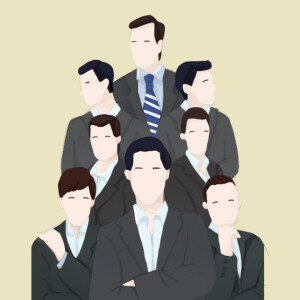
Thursday May 18, 2023
Thursday May 18, 2023
The Stranger
The Stranger Full Book Introduction
In The Stranger, events happen by chance. Unwittingly, the protagonist, Meursault, becomes involved in his friend’s conflict, shoots and kills his friend’s rival. During the trial, the public decides to focus on Meursault’s character rather than attending to the specific details of the case. Because Meursault didn’t weep at his mother’s funeral, they conclude that his personality is cold and callous. As a result, he is sentenced to death. Throughout these events, Meursault assumes the role of an outsider. The French title of the book is also sometimes translated as “The Outsider.” He watches events unfold with cold indifference. In his last moments, he calmly accepts his fate and transcends life and death.
Author : Albert Camus
Albert Camus was a renowned French-Algerian philosopher, author, and journalist. Camus was a leading figure in the philosophical school of thought known as Absurdism, and was associated with existentialism. He is often compared to his existentialist compatriot, philosopher Jean-Paul Sartre. Though, throughout his lifetime, he firmly denied his philosophical identity. Although Camus’ works vividly portray the absurd nature of life, they do not descend into despair and express dejection. Against the contradictory absurdities of modern experience, Camus’ works promote resistance, upholding truth and justice instead of hopelessness. The Stranger, The Myth of Sisyphus, and the play Caligula are among his most celebrated works, collectively known as the Absurdist Trilogy.
Overview | Chapter 1
Hi, welcome to Bookey. Today we will unlock the book The Stranger. This novel describes an accidental occurrence. How a nobody, living a mundane and monotonous life, becomes involved in a murder leading eventually to his execution.
The existentialist philosopher Albert Camus wrote The Stranger when he was twenty-six years old. When it was published, the novel was soon a huge success. It laid the foundation for Camus’ renowned writing career.
Within a few years of its publication, The Stranger had received widespread acclaim in the literary world. Reviewing the novel, critic Marcel Arland concludes, “We recognize… in The Stranger: a genuine writer.” Another critic, Henri Hell, wrote, “With The Stranger, Camus ranks at the apex of the contemporary novel.” In his book Writing Degree Zero, Roland Barthes credits The Stranger as creating a revolutionary “transparent form of speech” that would change our understanding of literature and even of reality.”
The story describes Meursault’s wrongful conviction. However, unlike in a typical miscarriage of justice, this protagonist is not completely innocent, nor has he been framed. In fact, he expresses his guilt and openly admits to the murder. Nonetheless, others at the scene of the crime are well aware of the fact that he committed this offence in a state of confusion. As this case unfolds, the judicial process becomes increasingly complex, and the trial lasts almost a year. Ultimately, in Meursault’s case, the verdict passed is that there is nothing human about him and his crime was premeditated.
If you find this outcome absurd, or perhaps consider it strange that such a ridiculous verdict could be reached under the supposedly advanced legal systems of modern times, this would be just what Camus intended. Why didn’t Meursault actively fight against it? Let us take a closer look at this story.
In this bookey, we will introduce Camus’ book in three parts:
Part One makes a simple summary of the story and explains how Meursault becomes embroiled in a court case;
In Part Two, we will analyze the character of Meursault, and explain why he is a stranger and what leads to his final execution.
Lastly, Part Three examines the novel’s message from a creative standpoint and examines Camus’ protagonist from his personal perspective.








